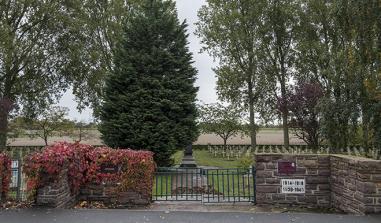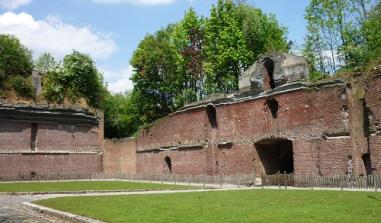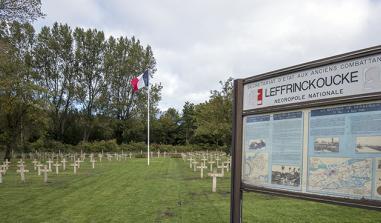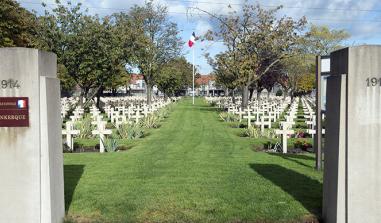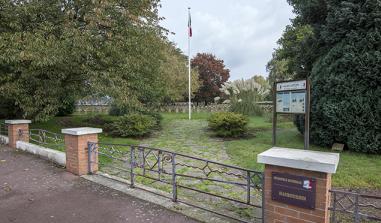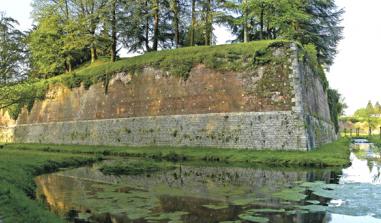Cambrai

La Nécropole allemande de Cambrai. Photo Licence Creative Commons. Libre de droit
The German Necropolis in Cambrai.
The cemetery on the Route de Solesmes
Located on the road to Solesmes, this cemetery not only evokes the fate of this town, occupied by the Germans from 26 August 1914 to 9 October 1918, but most importantly the first battle of Cambrai, from 20 November until 3 December 1917, the German offensive of March 1918 and this second battle of Cambrai, the last battle on the Hindenburg line, which was to finally liberate the city in October 1918, the town by then having endured terrible destruction.
Later the town was "adopted" by the County Town of Birkenhead. The cemetery had been created by the Germans during their occupation from March 1917. They had constructed a few monuments and a stone cross there. On 11 August 1918, the Bavarian commander of the town had handed over the maintenance of the cemetery to the town. Afterwards the German Military cemetery that was in Cambrai was transferred there to the Saint-Sépulcre cemetery. The graves have now been regrouped. The remains of 10,685 Germans, 192 Russians, 6 Romanians and 502 British are to be found there.
13 km to the north east of Bapaume on the road between Cambrai and Bapaume is the Louverval Memorial. It commemorates the 7,048 British and South African soldiers who died at the Battle of Cambrai in November and December 1917 and whose graves are unknown. The Battle of Cambrai, marked by a breakthrough on 20 November, a cessation on positions on 22 November and a German counter attack between 23 and 29 November, resulted in a limited gaining of ground but taught the Allies some valuable tactical and strategic lessons. For their part, the Germans had discovered that their line of defence was vulnerable. The Memorial, situated on a terrace at the far end of the military cemetery, was designed by H. Chalton Bradshaw and the sculptor C.S. Jagger, whose two bas-reliefs illustrating battle scenes are to be admired.
1917 had been a terrible year for all the fighting nations during the ongoing First World War. At the end of the year, the British, seeking to destroy the Hindenburg line (the defensive system for the territories occupied by the Germans), decided to launch an offensive to the south of Cambrai involving the large-scale use of tanks. The battle was merciless: the first battles were a great success for the British troops, except at Flesquières, but the Germans, at first thrown into confusion, very quickly started a powerful counter-offensive. For 15 days, attacks and counter-attacks were to follow in succession, with neither of the two armies chalking up decisive success. The human losses were enormous: 45,000 British and 55,000 Germans were killed, as whole villages were destroyed. During the First World War, a new weapon appeared on the battlefields: the tank. Tanks were designed to support the attacks of the infantry, driving them across enemy lines. During the battle in November 1917, the "Tank Corps" of the third British Army (a total of 476 tanks) was engaged to break through the Hindenburg line.
The objective of the battle was to take the strategic positions of the Flesquières ridge and the Bourlon woods before targeting the liberation of Cambrai. At Flesquières, the British attack came up against fierce resistance from German troops, who managed to destroy or immobilise several tanks. One of those destroyed was buried by the Germans in the spring of 1918. In November 1998, thanks to a handful of enthusiasts, it was unearthed. Today this war relic can be seen in Flesquières. At Cambrai, the memory of this battle lives on through the monument to the soldiers from the Cambrai regiments, opposite the gate to the citadel and through the French Remembrance monument listing all those from Cambrai who died in combat during the Great War. The Louverval cemetery is an important place of remembrance for them.
Characteristics: - 26.5 tonnes - 8.50 metres long - 3.20 metres wide - 52 cm wide tracks - 5 machine guns with 13,000 to 30,000 cartridges - Crew of 8 men.
It was on the Flesquières ridge that the most important episode of the Battle of Cambrai took place. Overlooking the valley, it is possible for us to imagine the starting point of the British attack on 20 November 1917, on a front of about 8 km stretching from Havrincourt to Bonavis. There used to be a mill there, but since it could be used as a reference point for the British artillery, it was destroyed by the Germans. Today there is a project to build an orientation table showing the Hindenburg line's defensive system and erect a monument to the glory of the soldiers who fell on the battlefield.
This raised German bunker is characterised by its shape and its use, as it served as an observation tower. In fact, its position allowed communication with Cambrai using visual signals. The observation post was attached to the château garden. The building is still very well preserved today.
An exact replica trench was created for the filming of the documentary "he Trench" by the BBC. Tours of the site are possible on request to complement a tour of the tank.
Flesquières Hill British Cemetery
In this cemetery, as in all those with more than 400 graves, the Commonwealth War Graves Commission has built a "Remembrance Stone" on which is engraved the inscription "Their Name Liveth For Evermore". In addition, the cemetery contains the graves of 589 known and 332 unknown soldiers. Next to the British are buried the soldiers from New Zealand and Australia who took part in the fighting at the end of the war.
Orival Wood British Cemetery
The remains of the famous English poet, Lieutenant Ewart Alan Mackintosh are buried here. In the same place there are also the graves of Canadian and German soldiers killed in the Flesquières sector.
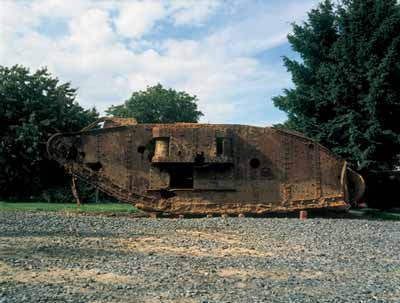
Char britanique. Photo Gorczynski
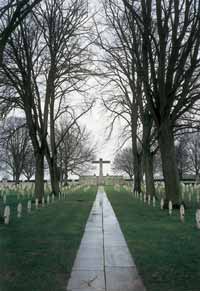
Nécropole allemande de Cambrai East Military Cemetery. Source : photo MPMP
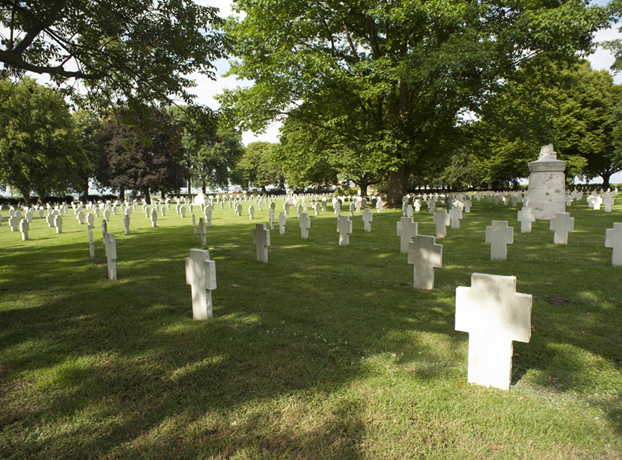
La Nécropole allemande de Cambrai. Photo Licence Creative Commons. Libre de droit
Practical information
Route de Solesmes 59400
Cambrai
Tél: 03.27.73.21.00Fax: 03.27.73.21.01
Accessible toute l'année


